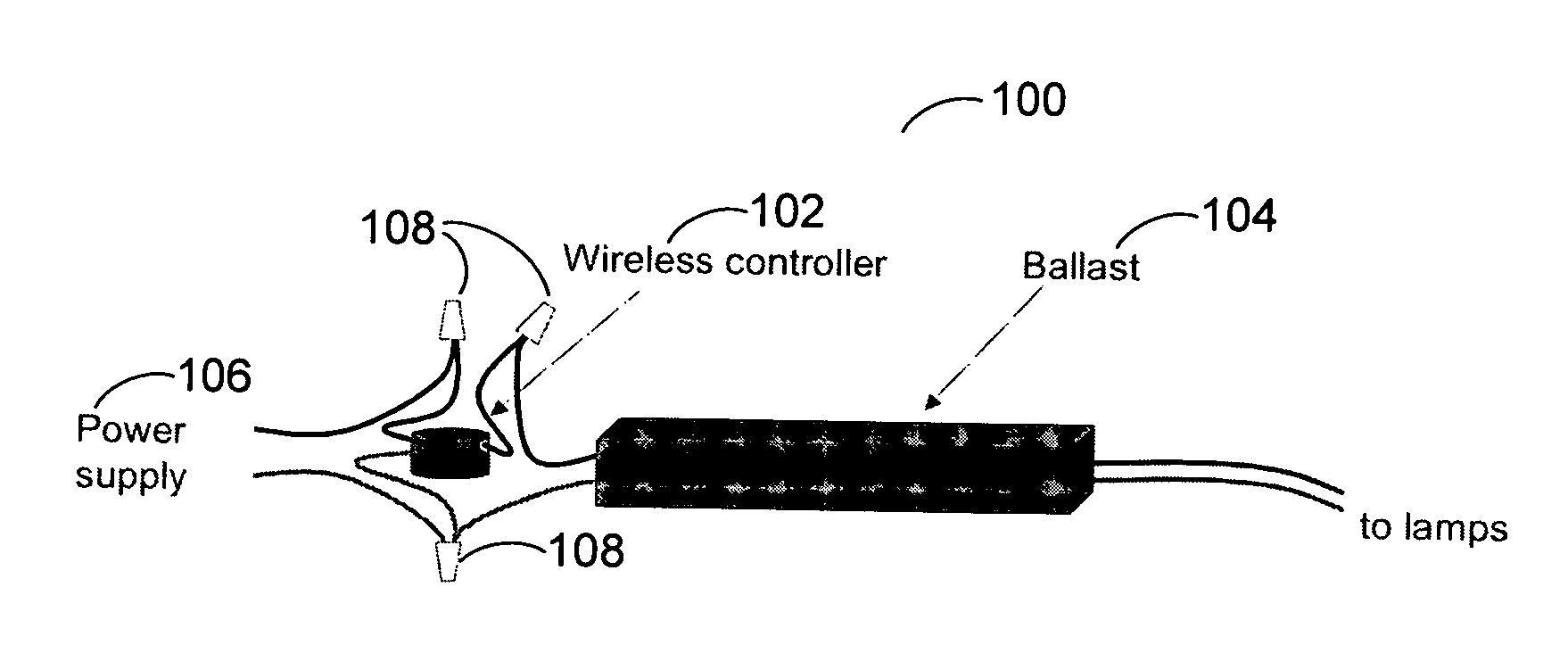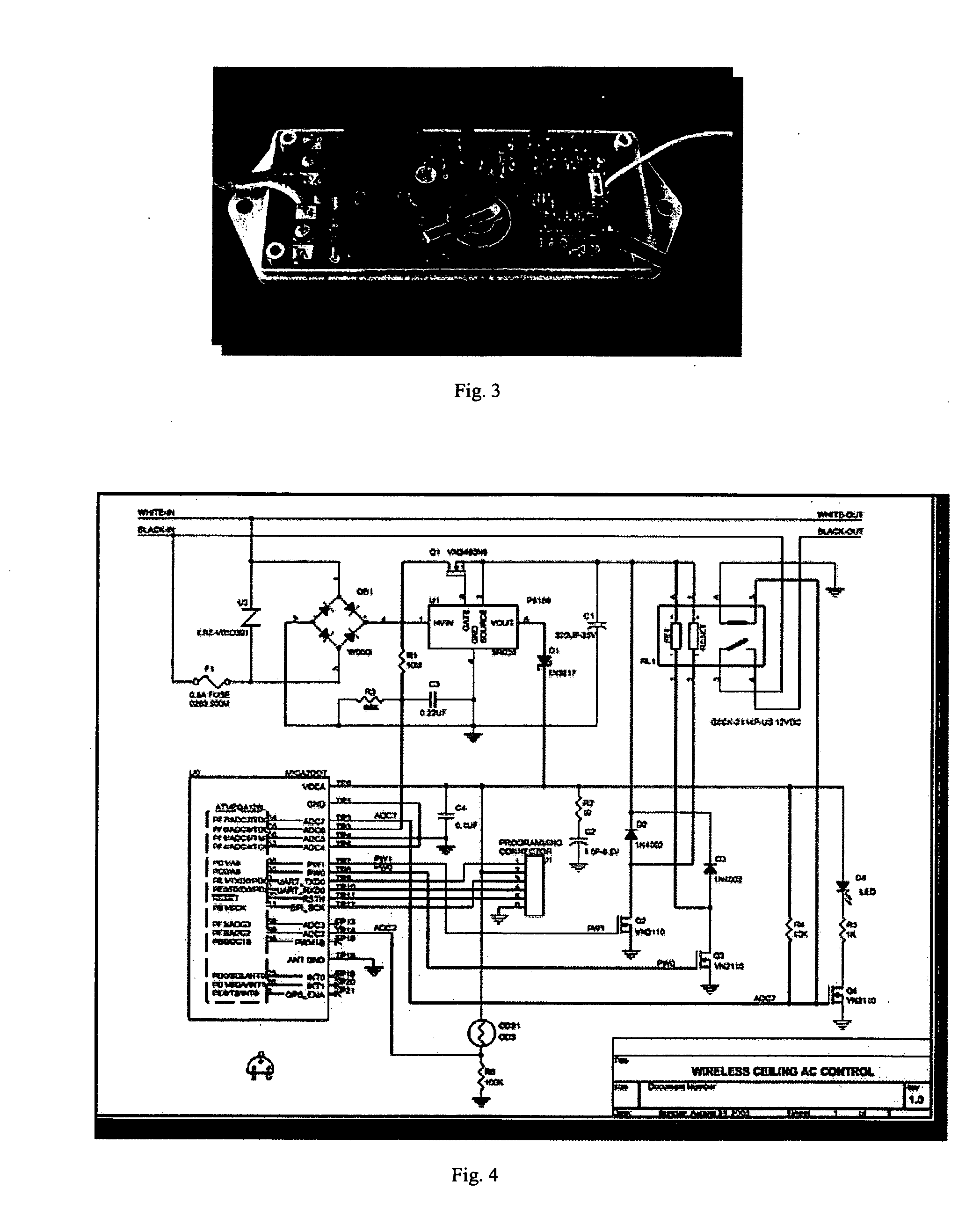Wireless network control for building lighting system
a wireless network control and building lighting technology, applied in the field of electrical energy control, can solve the problems of inflexible to changing requirements in the workplace, inability to respond to available daylight or occupancy, and high installation cost of traditional wired switches
- Summary
- Abstract
- Description
- Claims
- Application Information
AI Technical Summary
Benefits of technology
Problems solved by technology
Method used
Image
Examples
Embodiment Construction
[0014] The embodiments of the present invention are directed to a wireless controller and a wireless network using the controller for the control of lighting systems. The radio-controlled device includes several novel features. In addition, a control system that integrates several sensors in a radio network to control lights using the radio-controlled device also includes various novel features. Each of these is described below in further detail.
Radio-Controlled Relay Device
[0015]FIG. 1 is an exemplary schematic diagram 100 of a wireless controller controlled relay installation in accordance with one embodiment of the present invention. The radio-controlled relay device 102 can integrate a wireless radio, a relay (or one or more relays), a microprocessor, a dimming device, a power sensor and a signal generator in a stand-alone package that can easily be installed in a typical fluorescent fixture. It can be installed between ballast 104 and the ballast power source 106 and is powe...
PUM
 Login to View More
Login to View More Abstract
Description
Claims
Application Information
 Login to View More
Login to View More - R&D
- Intellectual Property
- Life Sciences
- Materials
- Tech Scout
- Unparalleled Data Quality
- Higher Quality Content
- 60% Fewer Hallucinations
Browse by: Latest US Patents, China's latest patents, Technical Efficacy Thesaurus, Application Domain, Technology Topic, Popular Technical Reports.
© 2025 PatSnap. All rights reserved.Legal|Privacy policy|Modern Slavery Act Transparency Statement|Sitemap|About US| Contact US: help@patsnap.com



